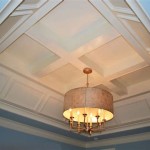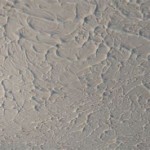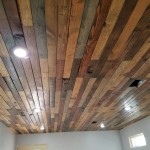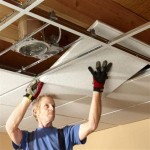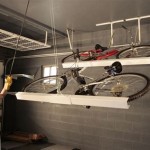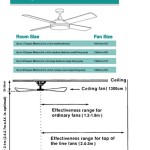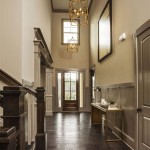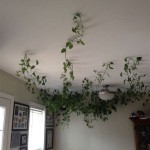Can You Use Beadboard For Ceiling? Exploring the Possibilities
Beadboard, with its distinct vertical grooves and classic aesthetic, is a material frequently used for wall paneling and wainscoting. However, the question often arises: can beadboard be used effectively and aesthetically on ceilings? The answer is a resounding yes, with certain considerations and approaches taken into account. This article delves into the specifics of using beadboard for ceilings, exploring its advantages, disadvantages, installation techniques, and important factors to consider before embarking on such a project.
The application of beadboard to ceilings offers a unique opportunity to enhance a room's character and visual appeal. The vertical lines of the beadboard can create a sense of height, particularly in rooms with lower ceilings. Furthermore, it can effectively conceal imperfections in the existing ceiling surface, providing a smooth and aesthetically pleasing finish. Beadboard ceilings can also be incorporated into various design styles, from traditional and farmhouse to coastal and even contemporary, depending on the finish and overall design scheme.
Advantages of Using Beadboard on Ceilings
One of the primary advantages of using beadboard on ceilings is its aesthetic appeal. It adds texture and visual interest to a surface that is often overlooked. A plain, flat ceiling can feel monotonous, while beadboard introduces depth and dimensionality. This is particularly beneficial in rooms where you want to create a focal point or add a touch of architectural detail.
Another significant advantage is its ability to conceal imperfections. Existing ceilings often have cracks, uneven surfaces, or evidence of previous repairs. Installing beadboard provides a clean and uniform surface, effectively hiding these flaws without requiring extensive and costly repairs. This can be a particularly attractive option for older homes or those with ceilings that are difficult to repair.
Beadboard can also contribute to improved acoustics within a room. While not a primary soundproofing solution, the layered structure of beadboard can help to dampen sound reflections, reducing echo and reverberation. This is especially noticeable in larger rooms or those with hard surfaces, such as tile or hardwood floors.
Furthermore, beadboard is relatively easy to install, particularly for experienced DIY enthusiasts. While professional installation is always recommended for optimal results, the material itself is manageable and can be cut and fastened with standard woodworking tools.
Disadvantages and Considerations
While the advantages of using beadboard on ceilings are numerous, it is essential to acknowledge the potential drawbacks and considerations before making a decision. One of the main concerns is the added weight. Beadboard, especially when made of solid wood, can be heavier than standard drywall. This weight can place additional stress on the ceiling joists and supports, potentially requiring reinforcement to ensure structural integrity. Thoroughly assessing the existing ceiling structure and consulting with a structural engineer or experienced contractor is crucial, particularly for older homes.
Another consideration is cost. While beadboard itself may be relatively affordable, the overall cost of installation can vary depending on the size of the ceiling, the complexity of the design, and whether professional installation is required. Factors such as the type of beadboard used (e.g., solid wood, MDF, PVC), the need for additional framing or support, and the cost of paint or other finishes will all impact the total project expense.
Moisture is also a significant factor to consider, especially in bathrooms or kitchens. Beadboard made from wood or MDF can be susceptible to moisture damage, such as warping, swelling, or mold growth. In these environments, it is essential to use moisture-resistant materials, such as PVC beadboard, and to ensure proper ventilation to minimize humidity levels.
The visual effect of beadboard ceilings can also be a consideration. While the vertical lines can create a sense of height, they can also make a room feel smaller or more enclosed if not implemented carefully. It is important to consider the room's size and proportions and to choose a beadboard design that complements the overall aesthetic. Light colors and wider beadboard panels can help to minimize the feeling of enclosure.
Installation Techniques and Best Practices
The installation of beadboard ceilings requires careful planning and execution to ensure a structurally sound and aesthetically pleasing result. The first step is to thoroughly assess the existing ceiling structure. This involves identifying the joists and their spacing, checking for any signs of damage or weakness, and determining whether additional framing or support is needed. If the existing ceiling is significantly uneven or damaged, it may be necessary to install furring strips to create a level surface for the beadboard.
Choosing the appropriate type of beadboard is also crucial. Solid wood beadboard offers a classic and durable option, but it is also the heaviest and most expensive. MDF beadboard is a more affordable and lighter alternative, but it is susceptible to moisture damage and may not be suitable for bathrooms or kitchens. PVC beadboard is a moisture-resistant option that is ideal for damp environments, but it may not have the same natural aesthetic as wood.
The installation process typically involves cutting the beadboard panels to size, applying adhesive to the back of the panels, and securing them to the ceiling with nails or screws. It is important to use fasteners that are long enough to penetrate the ceiling joists or furring strips, ensuring a secure hold. The seams between the panels should be carefully aligned to create a seamless and professional finish. In some cases, it may be necessary to use caulk or wood filler to conceal any gaps or imperfections.
Once the beadboard is installed, it can be painted or stained to match the room's decor. It is important to use a primer before painting to ensure proper adhesion and coverage. Multiple coats of paint may be necessary to achieve a smooth and uniform finish. For wood beadboard, staining can enhance the natural grain and add warmth to the room. It is important to choose a stain that is compatible with the type of wood used and to apply it according to the manufacturer's instructions.
Proper ventilation is essential to prevent moisture buildup and potential damage to the beadboard. In bathrooms and kitchens, it is important to install a ventilation fan to remove excess moisture from the air. Regular cleaning and maintenance can also help to prolong the life of the beadboard ceiling and keep it looking its best. Dusting or vacuuming the ceiling regularly can prevent the buildup of dirt and grime, and occasional cleaning with a mild detergent can remove stains or spills.
When installing beadboard on a ceiling, safety should always be the top priority. Working at heights can be dangerous, so it is important to use appropriate safety equipment, such as a sturdy ladder or scaffolding. Eye protection and gloves should be worn to protect against dust and debris. If using power tools, it is important to follow the manufacturer's instructions and to take necessary precautions to prevent accidents.
Ultimately, the decision of whether or not to use beadboard on a ceiling depends on several factors, including the desired aesthetic, the budget, the condition of the existing ceiling, and the environment in which the beadboard will be installed. By carefully considering these factors and following proper installation techniques, it is possible to create a beautiful and functional beadboard ceiling that will enhance the character and value of the home.

Diy Beadboard Ceiling Tutorial Easy And Inexpensive Custom Treatment

Diy Beadboard Ceiling Tutorial Easy And Inexpensive Custom Treatment

How To Install A Beadboard Ceiling Pine And Prospect Home

How To Install A Beadboard Ceiling Pine And Prospect Home

Beadboard Ceiling Panels Ceilings Armstrong Residential

How To Install Beadboard Panels On A Ceiling And Why We Ll Never Do It Again The Lake Land

How To Install Beadboard Panels On A Ceiling And Why We Ll Never Do It Again The Lake Land

Installing Bead Board Ceiling Sand And Sisal

9 Beadboard Ceiling Design Ideas Allura Usa

How To Install A Beadboard Paneled Ceiling The Kim Six Fix
Related Posts

